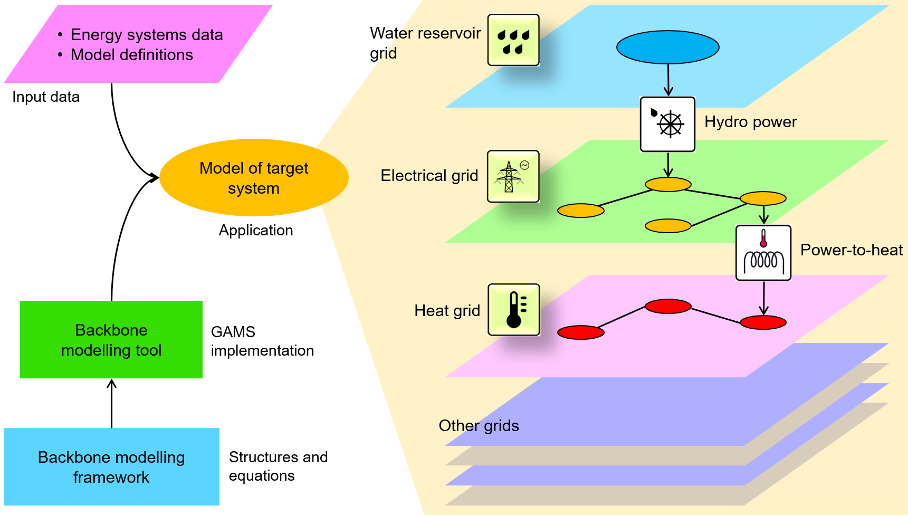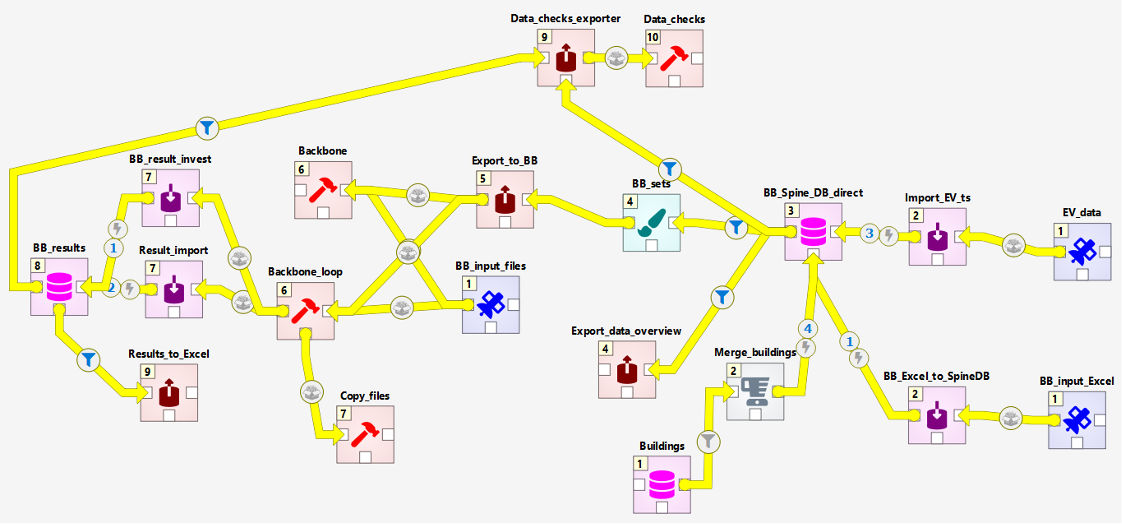Backbone
Backbone represents a highly adaptable energy systems modelling framework, which can be utilized to create models for studying the design and operation of energy systems, both from investment planning and scheduling perspectives. It includes a wide range of features and constraints, such as stochastic parameters, multiple reserve products, energy storage units, controlled and uncontrolled energy transfers, and, most significantly, multiple energy sectors. Both high-level large-scale systems and fully detailed smaller-scale systems can be appropriately modelled.

The framework has been implemented as open-source Backbone modelling tool using General Algebraic Modeling System (GAMS). The tool minimizes the total investment and operating costs of the system. The formulation is based on mixed-integer programming and takes into account unit commitment decisions for power plants and other energy conversion facilities.
The adaptability of Backbone extends to several dimensions: temporal, spatial, technology representation and market design. Stochastic inputs can be represented with short-term forecasts and longer-term statistical uncertainties. It is possible to vary time step durations, select representative periods, and define rolling optimization structures. Due to the modifiable node-unit structure, multiple efficiency representation alternatives, and aggregation possibilities, technologies can be modelled with appropriate accuracy. From the market design perspective, Backbone supports, for example, different reserve requirements and provision configurations as well as gate closures.
TradeRES Backbone demo provides a Spine Toolbox project that uses the Backbone modelling tool, allowing easy assessment of different scenarios and model configurations. The project workflow, which runs from right to left, is illustrated below:

In project TradeRES, Backbone is employed to create reference systems, depicting the system based on total cost minimization under the TradeRES scenarios. The reference systems in turn provide input data to the national case studies. In addition, Backbone is employed to analyze various contract for difference (CfD) schemes as well as price formation and intersectional distributional effects in the pan-European region.